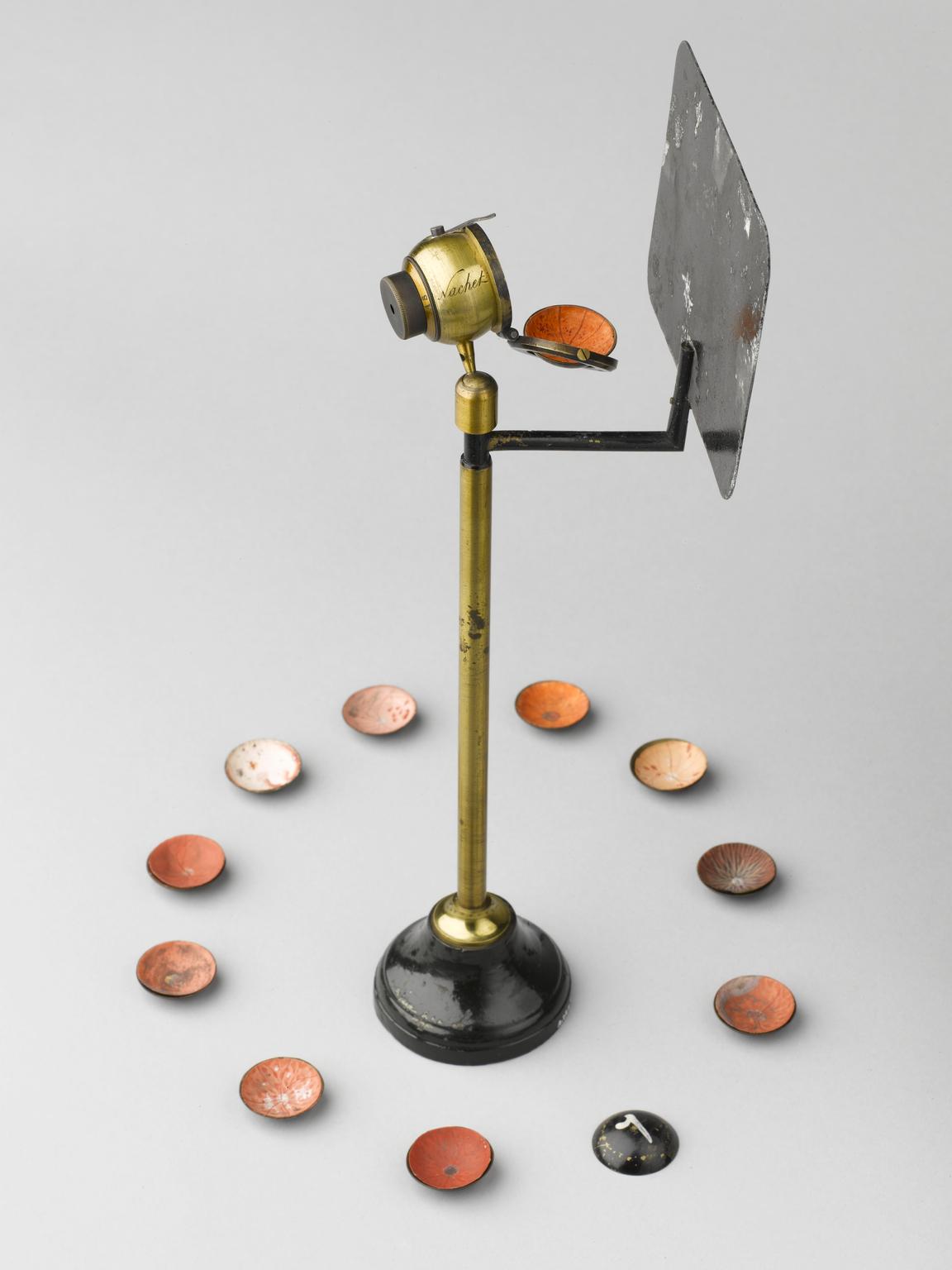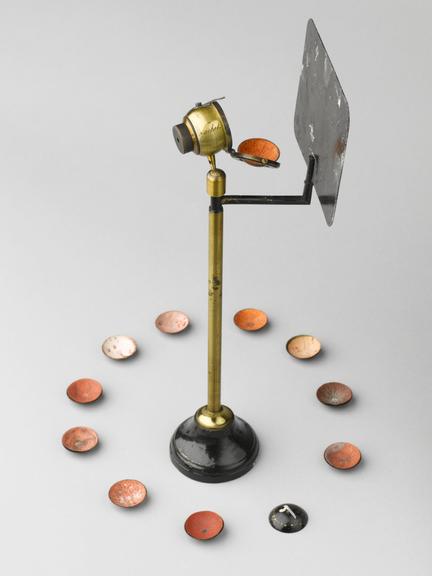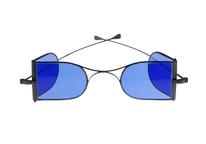
Eye phantom, France, 1871-1900
Brass eye phantom, with 12 eye cups, made by Nachet and Son, France, 1871-1900.
This brass eye phantom was an ingenious device used as a teaching aid for ophthalmology students. Each of the 12 cups is painted with normal or abnormal retinal appearance. The painted retinas were fitted onto the glass globe incorporated in the phantom. The student viewed the painted retina with an ophthalmoscope as if examining a real eye.
The ophthalmoscope was invented in 1851 by Herman von Helmholtz (1821-1894). It became the main instrument used to view the internal structure of the eye.
- Measurements:
-
overall: 270 mm x 112 mm x 75 mm, 0.47kg
- Materials:
- paper (fibre product) , brass (copper, zinc alloy) , glass and complete
- Object Number:
- A664767 Pt1
- type:
- eye phantom







